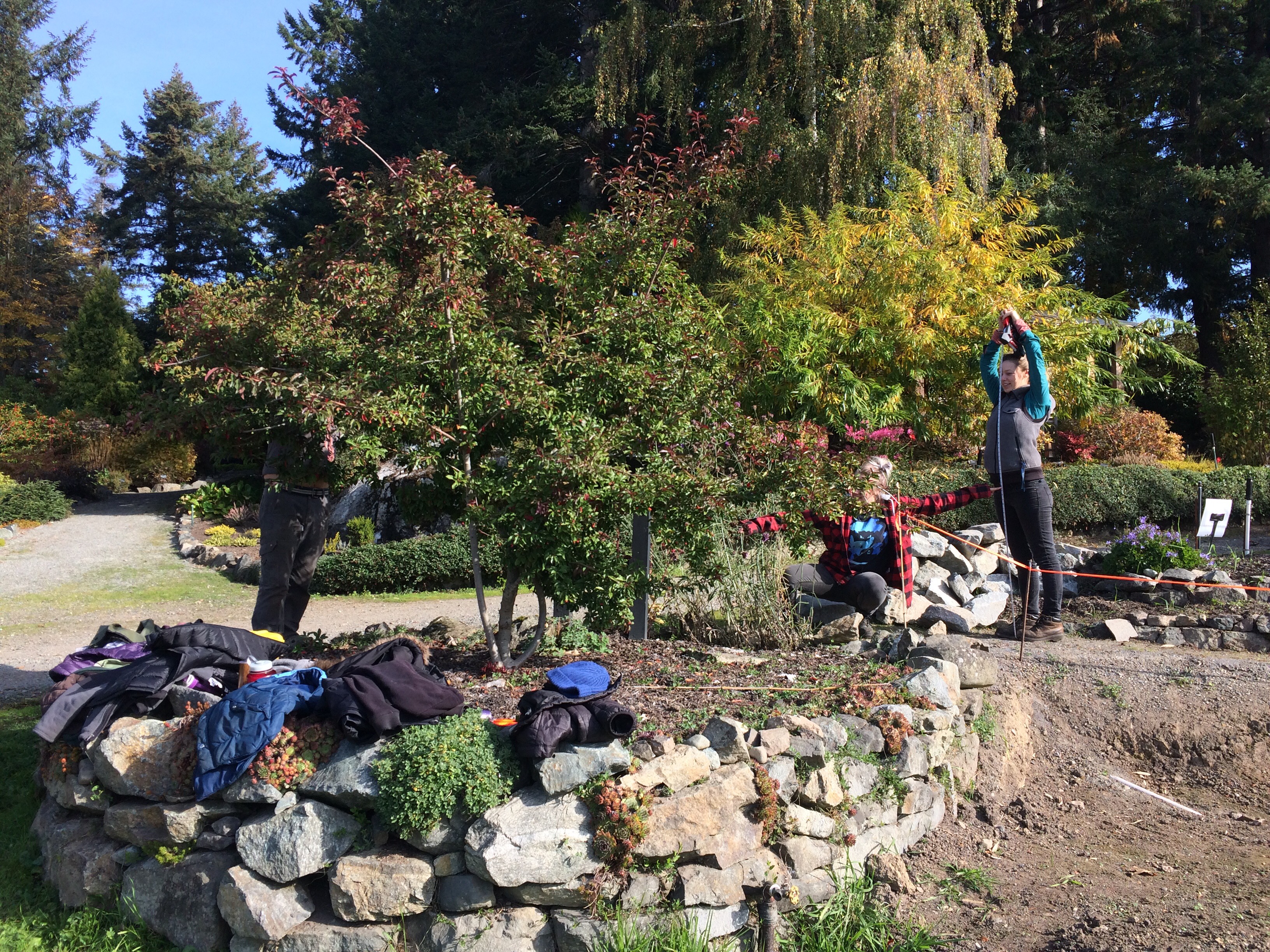Student Blogs - Hardscaping
The students from Pacific Horticulture College continue to share their knowledge through our blog. This week's blog is in two parts, enjoy!
Part One by: Ryan Barton
The Importance of Keeping It Level

All of us have undergone the harrowing experience of attempting to get that dastardly air bubble - suspended in neon green liquid - between those two needle thin black lines. Begged and pleaded for it even. But no matter the blood, sweat, or tears we all know that it is imperative to get that board, or string, or picture frame level. Getting level is the basis for all hardscaping projects. This lesson's importance can be translated to our day to day lives as well. Keeping a “level” head is a term for a reason. We always need to
take the time and patience from working that little air bubble, and apply it to our behaviors and thought processes. As a society, we should be mindful that others are all struggling with their own sinister little air bubbles, whatever that form may take. It is also a lesson in practicing humility, as something as simple as a 1 mm differential in height, or picking up someone's dropped toque can mean being within “the lines”, for you or them. In all seriousness, one cannot skip the step where you ensure your project is level, no matter if it is patio pavers, a new window install, or a retaining wall for your new wreath-making garden. Being level will be your solid ground to stand on when the world gets a little bit crazy and a little bit tilted. Good luck out there, and may your bubbles be ever in the lines!
Part Two by: Francois Alexander
Hardscaping is a man made formation in a landscape. It can be raised planter beds or it can be, pathways, ponds, structures. Where I see hardscape I see something that was needed for our convenience like a slope turned into a more gradual grade or stairs put in so that you can use a space more efficiently. But what about nature? Does nature really want to be paved over? Or have things built on it? Probably not. A pathway could disrupt the flow of water in a landscape and change what nature has been working on for ages. Well I see it as our responsibility to keep that in mind going forward into our careers. I think its always something to consider when we put in a hardscape, to consider balance with nature. Building a planter might not be so bad as it increases room to plant, and it may negate yard issues like compaction. But a pathway could change the landscape for the worse if done incorrectly. So you need to consider if your going to have the path be water permeable or if you will have drainage put in to continue the flow of water. These are only a small sample of what needs to be considered when doing a project there is so much more to consider.
Truthfully when I see a well planed and executed hardscape project I see something that uses nature as much as man-made materials. A good project uses materials that either blend with nature or stand out in such a well that it looks great but it never forgets the canvas its using. Lighting can look amazing on a landscaped surface illuminating your path for safety and aesthetics but a few well placed lights in the green space also can just take it over the edge and perfect the look even more.
I will use the example of the project our class is doing. We are putting a raised planted bed for wreath making. The slope before was fairly un-plantable it
was steep and water logged. Now we can see something taking form. A raised be that actually increases planting space and allows for many different plants to be involved. After leveling the slope in tiers it looks bare, but you can see something taking shape. It was hard at first to picture what the final product but now its coming together and we can really see what it will look like with the raw cedar walls holding up all that soil. It is my definition of hardscaping, because we have taken something that was not really usable and transformed it into a beautiful planter bed that fits in with the landscape. Truly a marriage between nature and hardscaping, and a great example of things to consider when we have our own projects down the road.

